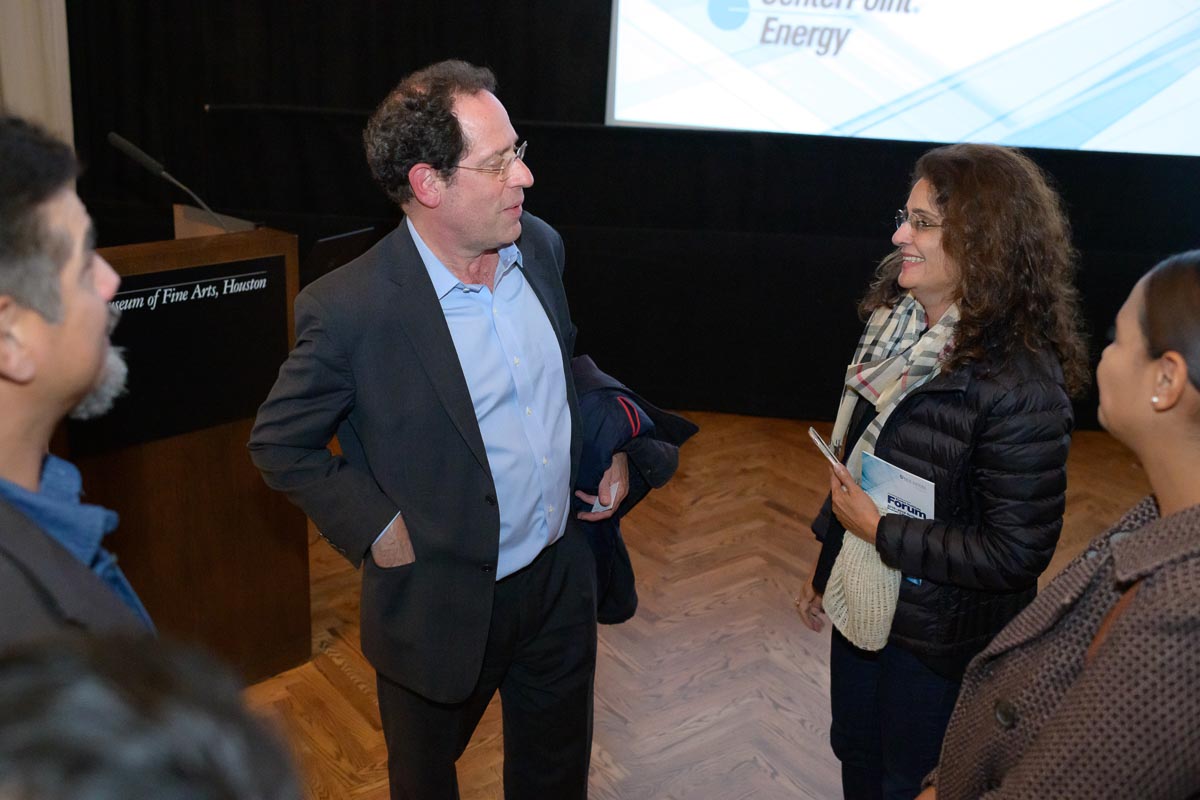New localism is the governing philosophy and practice that social, economic, environmental and political issues - like climate change, housing and education equality, economic growth and more - must be problem solved at a local level rather than a national scale.
"The role of the nation-state has been diminished, but the role of the city-state has been elevated. Of course, you wouldn't hear President Trump say that," Bruce Katz of New Localism Advisors said during his Kinder Institute Forum on Wednesday. He spoke about how the power in leadership is shifting: downward from national governments to cities and communities; horizontally from the public sector to networks of public, private and civic actors; and globally along circuits of capital, trade and innovation.
He spoke about three cities - Pittsburgh, Indianapolis and Copenhagen - that have become prime examples of how his new localism theory has been played out through growth, governance and finance in order to achieve a more prosperous, sustainable and inclusive society.
"This new localism is emerging by necessity to solve the challenges characteristic of modern societies: economic competitiveness, social inclusion and opportunity; a renewed public life; the challenge of diversity; and the imperative of environmental sustainability," Katz highlighted during his presentation.
Pittsburgh's new localism strengths are found in the abandonment of the steel industry in the late 1970s and the adoption of robotics and innovation as Pittsburgh’s leading economic focus. The Three Mile Island accident sparked the boom of Pittsburgh's robotics industry as companies started to send in robots to analyze the damage caused by the nuclear incident. From there, the Steel City invested in advanced robotics, autonomous vehicles, 3D printing and genomics.
The second city Katz highlighted during his lecture was Indianapolis, which was "so desolate" in the 1970s that "men with shotguns hunted pigeons on Sundays among empty buildings and along trash-strewn canals" in downtown. But through investing in sports complexes and "stealing sports teams" - pointing toward the Colts' move to the Railroad City - Katz said that the city leaders got experience in conquering investments and building a network for business. When sports weren’t sustainable in the long run, the network of leadership applied the same skills they acquired through "stealing sports teams" and focused their skills on biotechnologies. There was $73 million invested in the Indiana Future Fund, $12 million in the Indiana Seed Fund and $150 million in the Indiana Biosciences Research Institute and Indianapolis became the hub for all things biotech.
"Leaders have to meet to decide, rather than meet to discuss," Katz said. He continued, saying that Indianapolis leaders were able to gather and make change happen.
For the final example, Katz went across the Pacific to Copenhagen, Denmark. In the 1990s, Copenhagen had an unemployment rate of 17.5 percent and more than $750 million in the annual budget deficit. City leaders knew they needed to improve the city's public transit system, but couldn't afford more debt and couldn't raise taxes, so the leaders had to come up with a new financial plan. So the leaders formed two political parties aiming to develop idle land, regenerate the city and finance new infrastructure through the publicly-owned, privately-managed corporation. Through this corporation, the city was able to build its new public transportation system without raising taxes and increasing debt.
"When cities solve something, other cities watch and those other cities steal fast and plagiarize," Katz said. He later added that American cities can't just look at each other for solutions, but also look across the oceans towards international cities to get an understanding of how they solved major issues. "The leaders in Copenhagen are thinking on 50-year terms," Katz said. Through transparency, merged public entities and a public-private management model, Copenhagen was able to achieve the city's goals and continue to do so.
As for Houston, Katz said that the Bayou City is "America on fast forward" and that the country will quickly become a "majority-minority and this is going to shape how things are solved." He pointed to medical, technology and energy as Houston's key economic movers and encouraged the audience to tap into those industries to promote change socially, environmentally and economically.
"We should all work towards being a nation of problem solvers," Katz said. "For every Pittsburgh, there are dozens of cities subsidizing consumption rather than investing in innovation. For every Indianapolis, there are hundreds of cities where collaboration is informal, unstructured and underfunded. For every Copenhagen, there are thousands of cities leaving the value of their public wealth on the table." Instead, Katz argued, cities must invest in innovation, collaborate and develop structured networks or operations and finance creatively.
”Houston is in constant transition and flux, but it is one of the most welcoming, diverse and tolerant cities I've been in,” Katz concluded, “through the constant transition, there is constant tolerance."

